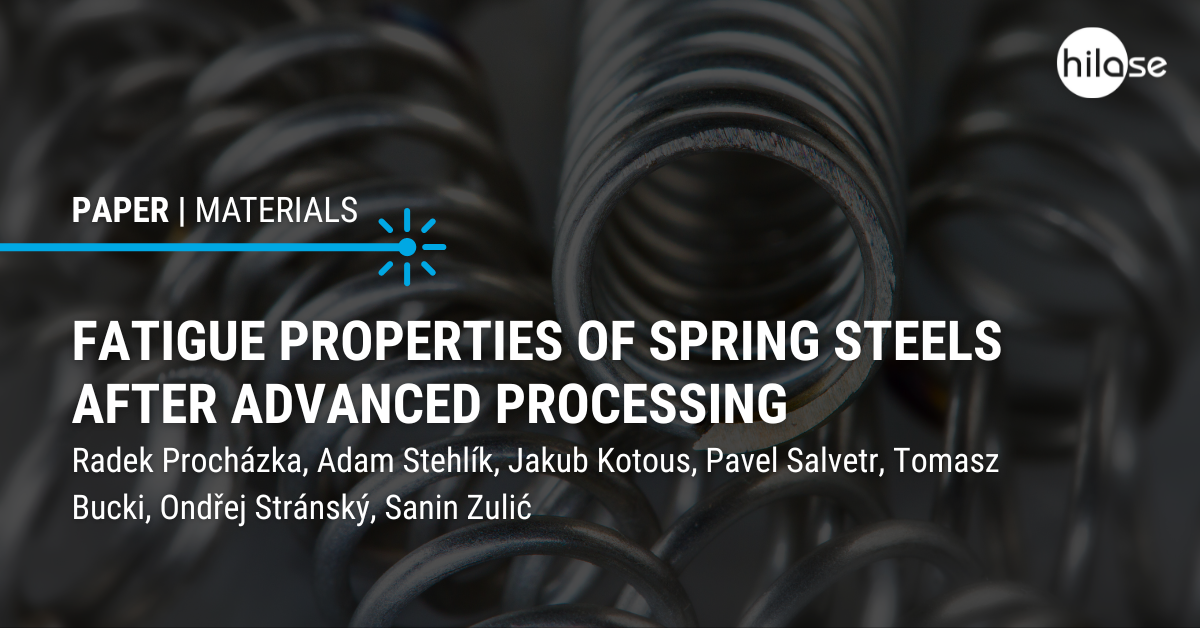HiLASIANS Sanin Zulić (International Business Development Manager) and Ondřej Stránský (Ph.D. student: Laser Shock Peening) are the co-authors of a study published in the Materials journal.

They collaborated on the article titled Fatigue Properties of Spring Steels after Advanced Processing with researchers from COMTES FHT a.s. (Radek Procházka, Adam Stehlík, Jakub Kotous, Pavel Salvetr) and the Kielce University of Technology (Tomasz Bucki).
This article deals with the effect of strain-assisted tempering (SAT) on the fatigue properties of 54SiCr6 steel used for spring steel wires in a wide variety of automotive applications, including coil springs. This steel spring wire is extremely strong, having a high elastic limit and yield point, giving the steel excellent energy accumulation and fatigue properties. This combination opens up new possibilities in helical and cylindrical coil spring design, resulting in the reduction of both size and weight. Lightweight coil springs lead to improvements in fuel consumption, stability and vehicle traction. A large plastic deformation and SAT were applied to enhance the yield point of the study material. Improvements in the static and cyclic properties of steel springs were investigated using tensile tests and 3PB fatigue tests at ambient temperature. In addition, an advanced laser shock peening (LSP) process was employed to increase the fatigue resistance of the SAT material. The results presented here show great improvements in the static and fatigue properties over commercial steel treatment. The material quality of the wires was evaluated to be insufficient for further processing with cold coiling.








